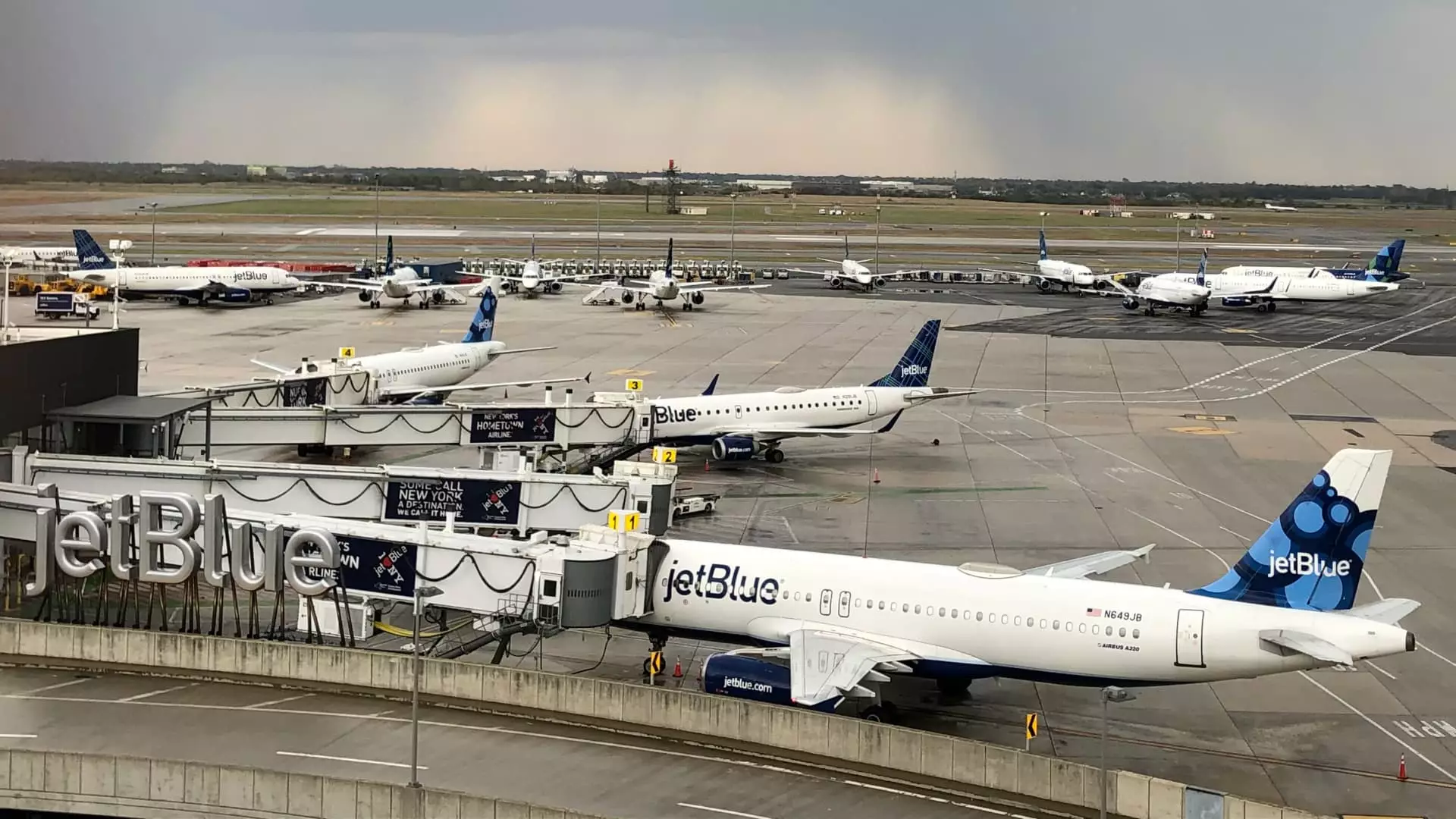As JetBlue Airways embarks on a new chapter marked by the unveiling of its airport lounges, the low-cost airline is clearly intent on reshaping its identity. After over twenty years of operations, the decision to enter the lounge market illustrates JetBlue’s evolving strategy to attract high-spending travelers and bolster its competitiveness against major airlines. This move not only introduces a premium experience for loyal customers but also signals a broader shift in the airline industry’s approach to customer service and revenue generation.
A Bold New Initiative: The Airport Lounges
Set to debut in late 2024, JetBlue’s airport lounges at New York’s JFK Airport and Boston Logan International Airport represent a significant investment in customer experience. The JFK lounge will occupy an impressive 8,000 square feet, followed closely by an 11,000-square-foot lounge in Boston. These spaces are designed to provide an upscale atmosphere for travelers, featuring amenities like cocktail and espresso bars and sophisticated light dining options. In a highly competitive landscape, where airlines strive for customer loyalty, JetBlue aims to create an inviting environment that encourages relaxation and connectivity before flights.
Beyond aesthetics, the strategic importance of these lounges can’t be overstated. Traditionally, lounge access has been a privilege associated with premium travel classes and elite memberships, effectively differentiating the customer experience. JetBlue’s decision to open exclusive access to its lounges for passengers traveling in its Mint business class, as well as for premium credit card holders, demonstrates a clear effort to align itself with the service models employed by larger carriers such as Delta, United, and American Airlines.
Credit Card Partnerships: A Revenue Generation Strategy
Another facet of JetBlue’s new strategy is its partnership with Barclays to introduce a premium credit card. This initiative closely mirrors the successful credit card ventures of legacy carriers that have capitalized on experience-enhancing offerings. With millions in potential revenue at stake, JetBlue is keen to tap into a lucrative market by catering to customers’ desire for added benefits and rewards. The card is likely to appeal to high-spending travelers who appreciate the privileges associated with their traveling habits, such as access to exclusive lounges.
This credit card launch is not merely opportunistic; it fits within a broader industry trend to optimize services and create supplementary revenue streams. Airlines have recognized the importance of enhancing customer loyalty, which often translates into financial gain. JetBlue’s strategy to combine lounge access with premium card offerings could prove pivotal in fortifying customer relationships and enhancing brand loyalty.
However, JetBlue faces inherent challenges as it navigates this shift. One significant concern is managing lounge capacity. Jayne O’Brien, JetBlue’s head of marketing and customer support, has indicated the company’s intent to avoid overcrowding by being selective about who can access the lounges initially. This cautious approach underscores the necessity of balancing exclusivity with accessibility, a fine line that many airlines have grappled with in recent years.
Moreover, as competitors continue to enhance their offerings—including exclusive first-class lounges and benefits for premium loyalty members—JetBlue must ensure that its enhancements do not merely mirror existing options but provide unique value to travelers. This becomes particularly vital as budget carriers like Southwest and Spirit Airlines also innovate their services, targeting a customer base that is increasingly discerning about travel experiences.
JetBlue’s pivot towards integrating airport lounges and offering a premium credit card encapsulates a significant transformation in its operational model. As the airline industry faces rapid changes in consumer expectations, JetBlue’s strategic choices position it not only to capture the growing demand for luxury travel experiences but also to enhance profitability through innovative customer engagement. The success of this strategy will ultimately depend on its execution and ability to create distinctive features that resonate with travelers. With careful navigation, JetBlue has the potential to carve out a substantial niche in the competitive airline landscape, aligned with higher standards and expectations of modern air travel.

